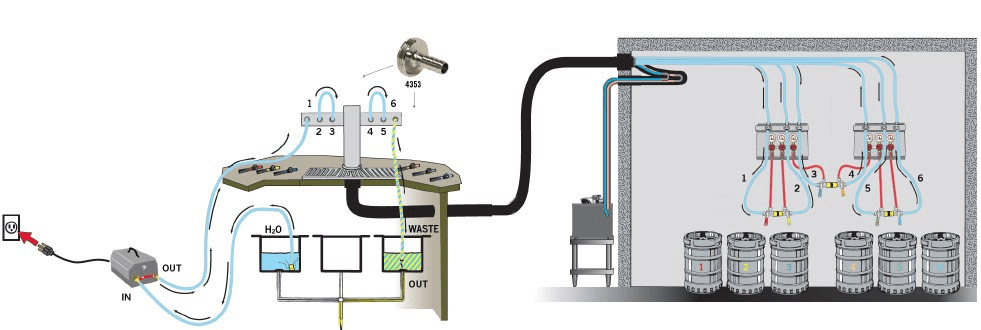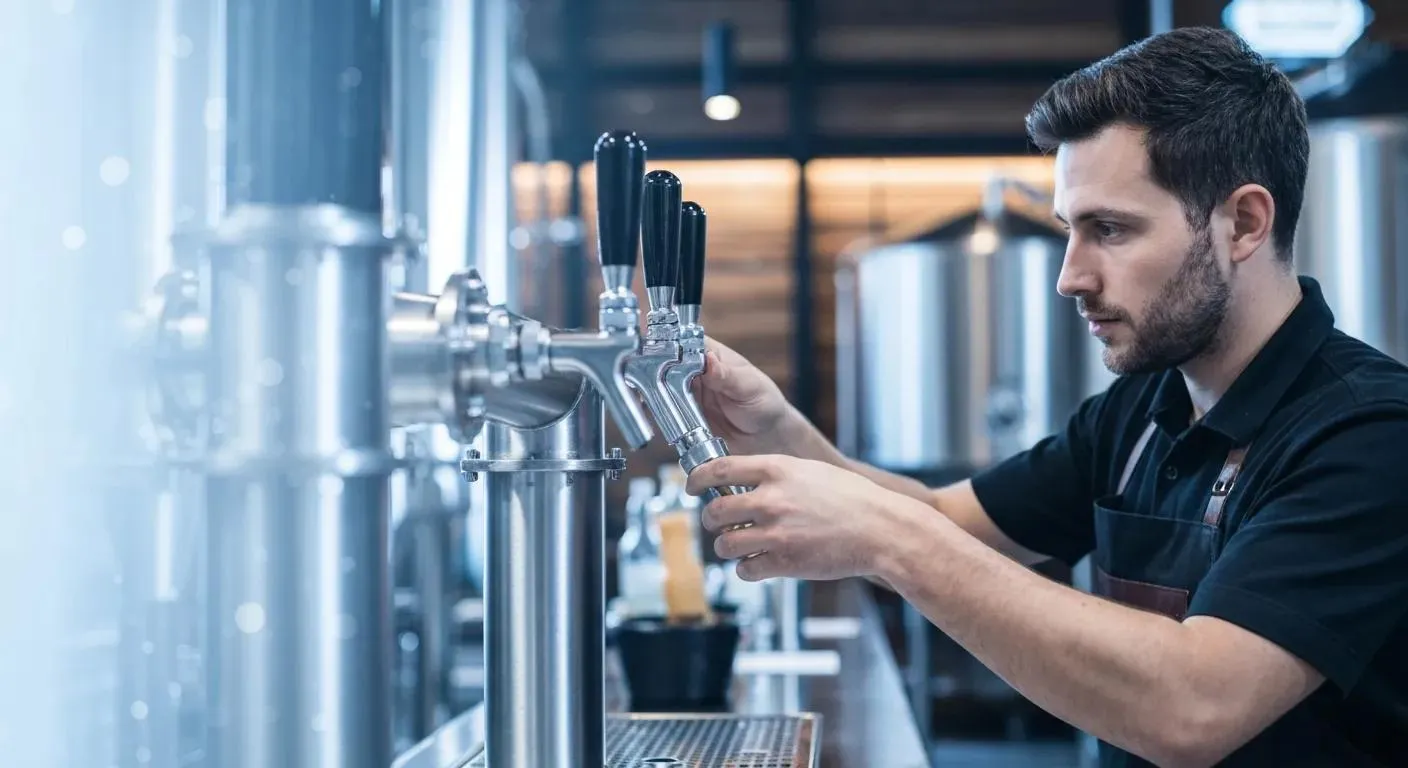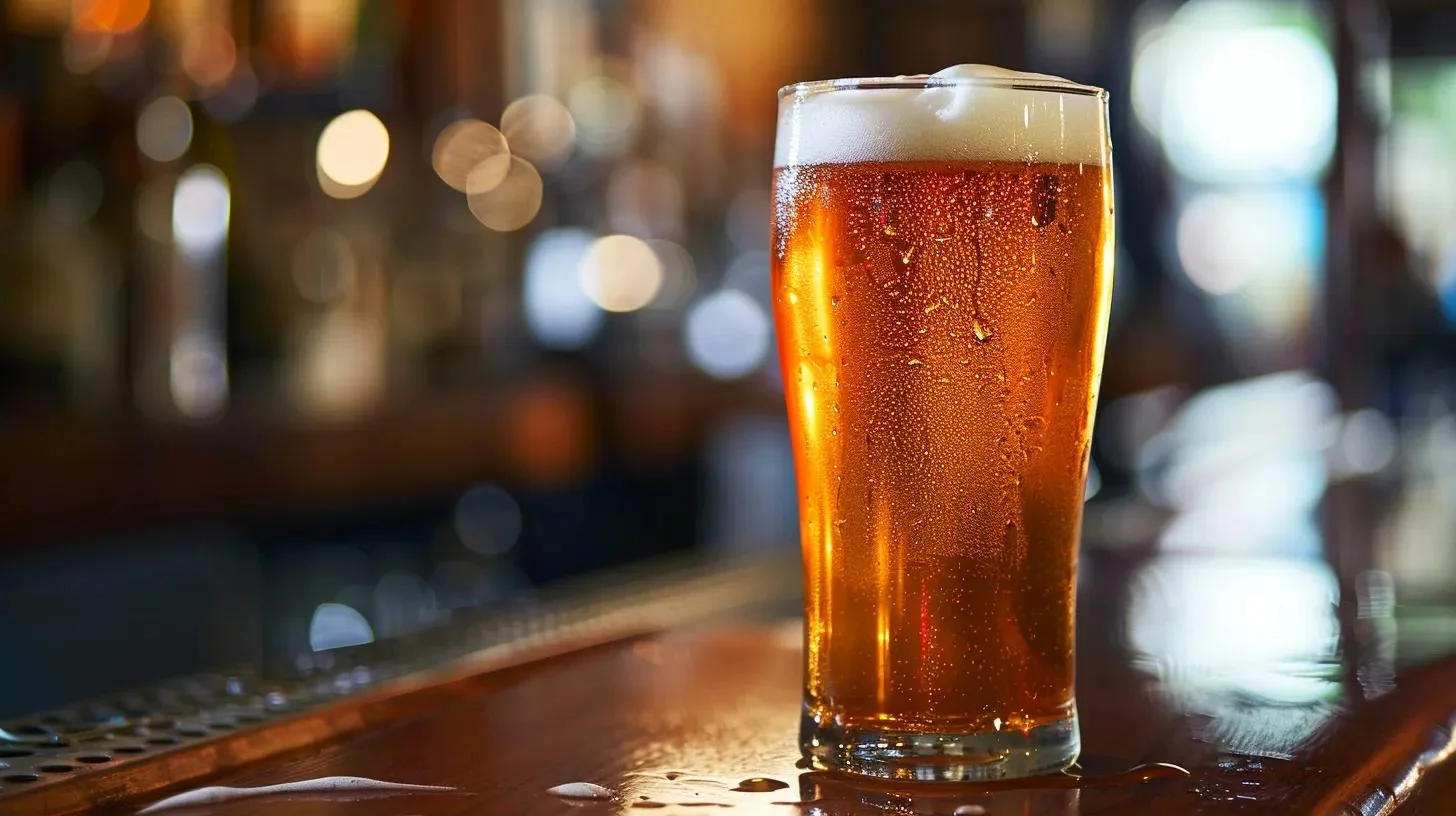Commercial Beer Line Cleaning: Ensuring Quality and Taste in Your Pub

Maintaining the cleanliness of commercial beer lines is as crucial to a beverage establishment as the quality of the beer itself. Regular cleaning of dirty beer lines ensures that every pint served preserves the taste as intended by the brewery. Contaminants such as bacteria, yeast, and beer stone can not only alter the flavor of the draft but can also pose health risks and reduce the efficiency of the beer dispensing system. Establishments serving draft beer understand the importance of a meticulously maintained draft system, considering it a necessary routine rather than an optional chore.
The process of cleaning commercial beer lines involves a series of steps that need to be followed thoroughly to guarantee the removal of all forms of build-up within the lines. This includes flushing the lines with cleaning solutions, rinsing, and drying. Equipment designed for commercial beer line cleaning can make the task more efficient, thereby assuring that the flavor and quality of the beer remain consistent. Through this, the longevity of the beer dispensing system is also greatly enhanced.
Key Takeaways
- Regular and thorough cleaning is essential to maintain the flavor and quality of draft beer.
- Equipment and procedures for beer line cleaning remove contaminants to ensure health and safety.
- Effective maintenance of beer dispensing systems preserves their efficiency and longevity.
Understanding Beer Line Contaminants
Maintaining impeccable cleanliness in beer lines is critical for the quality of the beer. Contaminants such as yeast, bacteria, mold, and dirty beer stones can compromise both the health and taste of draft beer.
Common Culprits of Contamination
- Yeast: A natural part of the brewing process, yeast can become a contaminant when it forms deposits in the lines, leading to off-flavors and aromas.
- Bacteria: These microorganisms thrive in sugary environments and can produce acidic compounds, damaging the taste and safety of the beer.
- Mold: Typically seen as a surface growth in damp areas, mold in beer lines can cause health problems and taint the beverage with musty flavors.
- Beer Stone: Composed of calcium oxalate, beer stone builds up in lines over time and can harbor bacteria and yeast, making thorough cleaning challenging.
Health and Flavor Impact
- Health: The presence of bacteria and mold in beer lines can pose health risks, potentially leading to foodborne illnesses.
- Flavor: Contaminants like yeast and beer stone can significantly alter the flavor profile of beer, leading to a subpar drinking experience.
Maintaining a regular cleaning schedule is essential to prevent the buildup of these contaminants and to ensure that the beer served is of the highest quality.

Essentials of Beer Line Cleaning
Maintaining clean beer lines is crucial for ensuring the quality and taste of draft beer. Proper cleaning eliminates contaminants that can cause off-flavors and spoilage, and it also prevents the build-up of yeast and bacteria.
Cleaning Frequency
Regular cleaning is essential to maintain the quality of the beer. The Brewers Association recommends cleaning draught lines at least every two weeks. More frequent cleaning may be necessary depending on the volume of beer dispensed and the types of beers served, as some beers may leave more residues than others.

Required Cleaning Equipment
A variety of cleaning kits are available, designed to suit different systems. a kit Essential equipment typically includes a cleaning pump or tank, a faucet wrench, a faucet brush, and a variety of cleaning adapters to ensure all areas of the system are reached. Using the right brushes and maintaining them is vital for effective cleaning.
Recirculation Cleaning
Recirculation systems use an electric pump to send the cleaning chemical through the lines. Recirculating the solution for at least 15 minutes improves contact time and effectiveness, ensuring thorough cleaning. It’s the most efficient method for establishments with long-draw draught beer systems. Direct Draw systems and Air-Cooled Systems.
Choosing the Right Cleaning Solution
It's critical to select a cleaning solution that is appropriate for the materials used in beer lines and other components of the draught system. Solutions should be strong enough to remove build-up but safe for use with the equipment. Always follow with an adequate rinse to ensure no cleaning solution remains in the lines.
Step-by-Step Beer Line Cleaning Process
Maintaining the quality of beer served in commercial establishments requires a serious effort and meticulous, regular cleaning of the beer lines. This process helps to ensure the beer remains fresh and free from contaminants that can affect flavor and safety.
Preparing the Cleaning Solution
The first step in the beer line cleaning process is to prepare the cleaning solution. One must use a beer line cleaning kit, which specifically includes a beer line cleaning solution that is designed for this purpose. The instructions on the beer line cleaning kits and the solution must be followed carefully, typically involving diluting the concentrate with water to achieve the correct ratio for effective cleaning.
Flushing and Rinsing the Lines
After the solution is prepared, flushing the beer lines clean is next. Begin by disconnecting the beer kegs and attaching the cleaning keg couplings. Then, the cleaning solution is pumped through the lines to remove any buildup of beer stone and other contaminants. The Brewers Association recommends running the solution through for a time of 15 minutes which ensures the entire length of the beer line is contacted with the cleaner. Once the lines have been thoroughly cleaned, they should be flushed with clean, cold water to rinse any residual cleaner from the lines, ensuring no cleaning solution is left that might affect the taste or safety of the beer. To verify the solution is out of the beer system. Use Ph paper and make sure it's neutral or at number 7 color.
Flushing and Using pH Paper
A critical part of the beer line cleaning equipment and process is confirming that the lines have been rinsed properly. Using pH paper to test the acidity or alkalinity of the residue water inside the lines is essential. This allows one to compare the pH level of the water from the draft system to that of the tap water to ensure they are similar, indicating that the lines are successfully rinsed and are free of cleaning solution. Proper maintenance dictates multiple flushings may be required to return the pH to a neutral level, as detailed in The Basics Of Beer Line Cleaning.

By following these steps, establishments can conduct thorough maintenance of their beer dispensing systems, ensuring a consistently high-quality drink product for their consumers.
Maintaining Your Draft Beer System
Maintaining a draft beer system is critical not only to serving quality beer but also the best way to ensure the longevity of the equipment. Regular cleaning and inspection can prevent the buildup of biofilm and beer residue, which could cause off-flavors and affect the beer's quality.
Regular Maintenance Practices
Draft Systems: At the core of regular maintenance is the cleaning of the beer lines. Industry standards suggest that the tap lines should be cleaned at least every two weeks. This involves using a cleaning solution that is appropriate for the system—typically a 2% - 3% sodium or potassium hydroxide at a temperature between 80°F to 110°F. The solution should be recirculated or left to soak for at least 15 minutes to ensure thorough contact time.
- Kegerators: Should receive the same level of attention as commercial systems. After disconnecting, they should be cleaned following each keg swap.
- Faucets: Require disassembly and manual cleaning to remove any buildup of yeast and sugar deposits. Using a spanner wrench to remove the faucet is recommended for thorough cleaning.

Cleaning Frequency Checklist:
- Weekly: Rinse with cold water.
- Biweekly: Chemical cleaning with caustic solution.
- Quarterly: Acid cleaning to remove beer stone deposits.
- Annually: Full system inspection and parts replacement as necessary.
Troubleshooting Common Issues
Off-Flavors: An immediate sign that a draft beer system requires maintenance is the presence of off-flavors in the beer. This is often due to microbial growth within the beer lines that must be addressed promptly.
- Excess Foaming: Can be due to various issues, such as incorrect temperature, line blockages, or equipment faults. Regular line cleaning and system checks help mitigate these problems.
- Leaking Faucets or Couplers: Require immediate attention to prevent beer waste and maintain system pressure. Replacing washers or seals may be necessary to ensure airtight connections.

By adhering to a stringent maintenance schedule and remaining vigilant for these common issues, operators can ensure their draft beer system functions optimally, providing patrons with the fresh, high-quality beer they expect.
Summary
Commercial beer line cleaning is a critical maintenance task that ensures the quality of beer served to customers. Establishments should create a regular schedule for line cleaning, generally every two weeks, to prevent the buildup of biofilm, yeast, bacteria, and beer stone, which can affect the taste and quality of the beer.
Essential steps in the cleaning process include:
- Flushing the lines with a cleaning solution to remove residues.
- Rinsing thoroughly with water to eliminate any trace of the cleaning chemicals.
- Cleaning faucets, keg couplers, and other hardware that comes in contact with the beer.
The ideal cleaning solution is typically a 2-3% mixture of Sodium or Potassium Hydroxide, applied at temperatures of 60°F to 100°F to be most effective. Contact time should be at least 15 minutes for recirculation or 20 minutes for a static soak.
Efficiency can be measured by considering two main components:
- The cost of beer lost during cleaning.
- The cost for the service in terms of time, labor, and materials.
It's essential to balance these costs with the benefits of serving clean, fresh-tasting beer, which can impact customer satisfaction and return business. A proactive approach to beer line cleaning is not only integral to serving quality beer but also to maintaining the longevity and performance of the draft beer system.
For more questions regarding beer line cleaning equipment, or cleaning. If you need help with commercial beer line cleaning please reach out to us at Renny's Draft Solutions.



